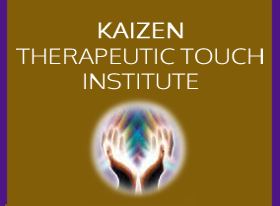 Rethinking and restructuring how healthcare can best be delivered in the coming decades presents creative new opportunities. Old healthcare models are best replaced by new ones that evolve from the emerging holistic understanding of human health and wellness and the public’s interest in complementary and alternative therapies, self-empowerment through education, prevention and health promotion.
Rethinking and restructuring how healthcare can best be delivered in the coming decades presents creative new opportunities. Old healthcare models are best replaced by new ones that evolve from the emerging holistic understanding of human health and wellness and the public’s interest in complementary and alternative therapies, self-empowerment through education, prevention and health promotion.
BACKGROUND AND TRENDS
Almost 2 decades ago, in 1991, the College of Nurses of Ontario (CNO) acknowledged a place and role for complementary and alternative modalities in nursing care. The CNO Entry to Practice Standards (2008), states the following:
- Explores and develops a range of possible alternatives and approaches for care with clients.
- Facilitates client ownership of direction and outcomes of care developed in their
- health care plans
- Collaborates with other health care team members to develop health care plans that promote continuity for clients as they receive conventional and complementary health care.
- Assists clients to identify and access health and other resources in their communities (e.g., other health disciplines, community health services, support groups, home care, relaxation therapy, meditation and information resources).
The Complementary Therapy Nurses Interest Group (CTNIG) is a recognized professional interest group within the Registered Nurses Association of Ontario, which is the professional voice for nurses practicing in Ontario. The CTNIG was recognized by the RNAO in September 2002. Therapeutic Touch is one of the modalities represented in this multi-modality professional interest group.
In developing its guidelines for the use of complementary therapies in Hospice, The Hospice Association of Ontario (HAO) has used the standards and practices developed by The Therapeutic Touch Network of Ontario as its model.
In Ontario, many hospitals and hospices are already using Therapeutic Touch within their settings.
APPLICATION AND AREAS OF USE
Therapeutic Touch has a place in all areas of patient care, from labour and birth and neonatal care through to end of life care. Its effectiveness in reducing anxiety and altering the perception of pain has helped many pre and post surgical patients. Because it can be administered without touching, it is a perfect adjunct to the care of burn victims. It has also been demonstrated to be effective in the operating room, creating a calm, relaxed and harmonious environment conducive to peaceful co-operation among staff.
Easy to administer, without the need of any equipment, Therapeutic Touch can be effective in a session lasting anywhere from a few minutes up to 20 minutes, depending on the circumstances. Busy hospital staff are not required to necessarily set aside specific time frames, but rather can offer it in the moment, as needed. The 20 minute rest period that follows a Therapeutic Touch session facilitates the healing process.
EMERGING MODELS OF CARE
With the development of new technologies many health care facilities are being restructured in Ontario. Ambulatory care is emerging as a viable model for the near future. The ambulatory care model reaches into communities and focuses on prevention, healthy living and survivorship as much as it does on medical and surgical intervention. It supports healthy life styles and self care, integrating easily into wellness programs. Therapeutic Touch principles of care with its focus on both healing and empowering patients to take an active role in managing their own health is a good fit for this model.
Learn Therapeutic Touch and invite relaxation, wholeness and balance into your life.
By Susan Keith with Julia von Flotow
April, 2011





